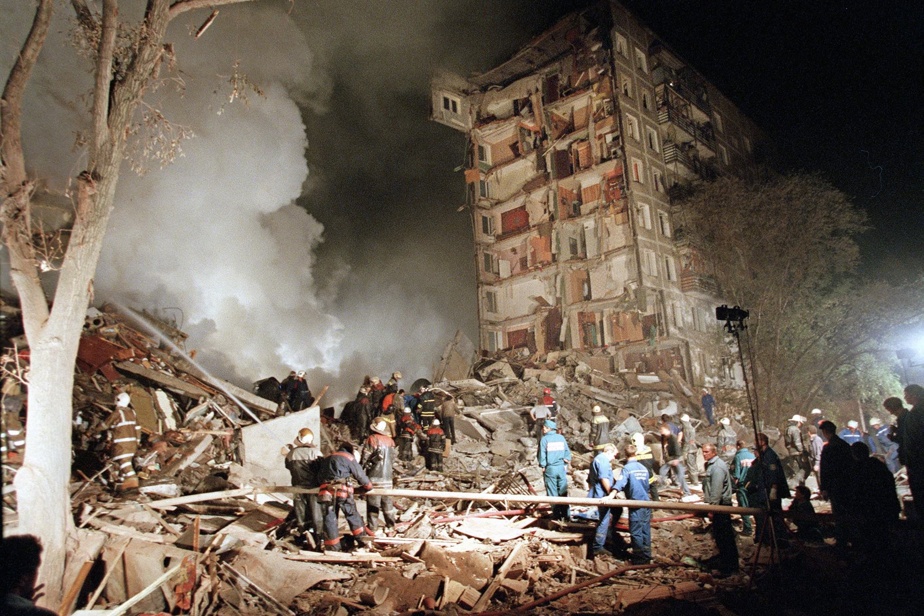Moscow – September 1999
In the early morning, a charge of 300 kg of TNT blasted an eight-story building in the south of the capital, killing nearly 120 residents in their sleep, just days after 90 people died during an event similar. The attacks were attributed by the authorities to “Chechen terrorists” and served as a prelude to the outbreak, in October 1999, of the second Russo-Chechen conflict.
Dubrovka Theater – October 2002

PHOTO IVAN SEKRETAREV, ASSOCIATED PRESS ARCHIVES
A woman mourns during a ceremony in Moscow in memory of the victims of the hostage-taking at the Dubrovka theater.

PHOTO DMITRY LOVETSKY, ASSOCIATED PRESS ARCHIVES
Evacuation of victims from the Dubrovka theater, October 2002
On the sidelines of the presentation of a musical, Chechen terrorists demanding an end to the war waged against them in the secessionist region take 900 hostages in a theater in Moscow. More than 130 hostages died, most due to the use of toxic gas by special forces during the rescue operation.
Beslan School – September 2004

PHOTO ARCHIVES ASSOCIATED PRESS
The bodies of the victims of the hostage-taking in a Beslan school lie in front of the establishment.

PHOTO SERGEI GRITS, ASSOCIATED PRESS ARCHIVES
A mother cries at the grave of her son, one of the victims of the hostage-taking at a school in Beslan.
A commando of around thirty members, mostly Chechens, takes more than a thousand hostages, including hundreds of students, in a school in Beslan, in North Ossetia, a region in southern Russia. At the end of a bloody assault by the police, all but one of the attackers were killed, as were 400 hostages.
Nevsky Express Train – November 2009

PHOTO MISHA JAPARIDZE, ASSOCIATED PRESS ARCHIVES
Police officers roam a train station platform with sniffer dogs the day after the explosion aboard the Nevsky Express in November 2009.
A bomb explodes on board a high-speed passenger train from Moscow to St. Petersburg, killing 28 people and injuring more than 130. Eight suspects believed to be rebels who took part in the attack were later killed in a special operation in Ingushetia, Russian special forces said at the time.
Moscow Metro – March 2010

PHOTO PAVEL GOLIVKIN, ASSOCIATED PRESS ARCHIVES
Evacuation of the Moscow metro after the suicide attacks of March 2010
Two female suicide bombers from Dagestan, a predominantly Muslim region in the Caucasus, detonated their explosive belts in two busy metro stations in the center of the Russian capital. The attack left 39 dead and 90 injured.
Domodedovo Airport – January 2011
A man sets off an explosive device in the crowded arrivals hall of this airport, considered the most important of Moscow’s three, killing at least 36 people and injuring 150. Another attack is claimed by an Islamist rebel group advocating the creation of a caliphate bringing together the Russian republics of the North Caucasus.
Volgograd – December 2013

PHOTO DENIS TYRIN, ASSOCIATED PRESS ARCHIVES
Site of a bus explosion in Volgograd in December 2013
Two explosions in two days – in a train station then in a bus – kill 34 people in this Russian city located 650 kilometers from the site of the 2014 Winter Olympics, scheduled for a few weeks. Two brothers who allegedly helped the suicide bombers reach Volgograd were later arrested in Dagestan.
With Agence France-Presse
